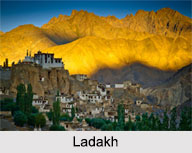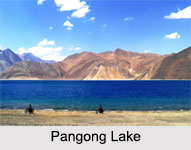 Ladakh is a region located in the Indian state of Jammu and Kashmir. This city is known as the Little Tibet or the last Shangri-la, where Mahayana Buddhism is prevalent. Ladakh covers about 70 percent of Jammu and Kashmir with the history of Buddhism, tourism, monasteries and the beautiful valleys.
Ladakh is a region located in the Indian state of Jammu and Kashmir. This city is known as the Little Tibet or the last Shangri-la, where Mahayana Buddhism is prevalent. Ladakh covers about 70 percent of Jammu and Kashmir with the history of Buddhism, tourism, monasteries and the beautiful valleys.
Location of Ladakh
Ladakh is located in the eastern part of the state of Jammu and Kashmir. It covers an area of about 45000 square miles. This region includes the Himalayan Range with Western Himalayan Sub-alpine Conifer Forests, Kunlun Mountain Range, the Karokaram Range, upper Indus River valley and Zanskar Himalaya.
History of Ladakh
History of Ladakh is noted from the nomadic life of Neolithic era. The early history denotes the rule of Guge Empire of western Tibet, Islamic invasion in the early medieval era and after the Independence of India it became the part of modern India. In early part of medieval history, Ladakh got the identification as a separate entity after the establishment of the Kingdom of Ladakh in about 950 AD. It became a part of Independent India in 1948. 
Geography of Ladakh
Geographically, Ladakh is positioned on the highest plateau of Jammu and Kashmir Ladakh is extended from Zanskar in the south and Nubra valley to the north over Khardung La, roughly deserted Aksai Chin and Kargil and Suru Valley areas in the western part.
Demography in Ladakh
The racial composition of Ladakh"s people exhibits a blending of the Indo-Iranian and the Mongoloid. The tribe of Ladakh is the mixture of mixed Tibetan and Dard descent. Brokpa tribe and Changpa Tribe are dominant here.
Education in Ladakh
Ladakh has the most number of primary schools. Urdu language and English with other relevant subjects are taught here. Buddhism is widespread here, so that the schoolings in the monasteries are widely practiced.
Economy in Ladakh
 The economy of Ladakh is mainly agricultural. The cultivation of Barley, wheat and peas, livestock and animal husbandry (especially yak, cows, sheep and goats) are the main economy holders. The agriculture, tourism, textile, carpets making, and dyestuffs are the secondary industries here.
The economy of Ladakh is mainly agricultural. The cultivation of Barley, wheat and peas, livestock and animal husbandry (especially yak, cows, sheep and goats) are the main economy holders. The agriculture, tourism, textile, carpets making, and dyestuffs are the secondary industries here.
Administration of Ladakh
Ladakh was divided into the Leh District and Kargil district in 1979. Ladakh Autonomous Hill Development Council in modern Ladakh is responsible for the development of Ladakh.
Culture in Ladakh
Tibetan culture is principal cultural part in Ladakh. Lakdakhi culture shows the elegance in food, festivals, architecture and celebrations. Indian, Tibetan and Buddhist influences are very strongly seen in the architecture of Ladakh. Tibetan Buddhists concentrate mostly in Ladakh. Shia Muslim, Hindus, Sikhs and Christians are the residents in this region.
Tourism in Ladakh
Ladakh has many leisure tourism attractions like Leh, Drass valley, Suru Valley, Kargil, Zanskar, Zangla Monastery, Rangdum, Padum, Phugthal, Sani Monastery, Stongdey Monastery, Shyok Valley, Sankoo and Salt Valley. There is a popular bike route from Manali to Ladakh via Nubra valley, which allures for adventure.



















